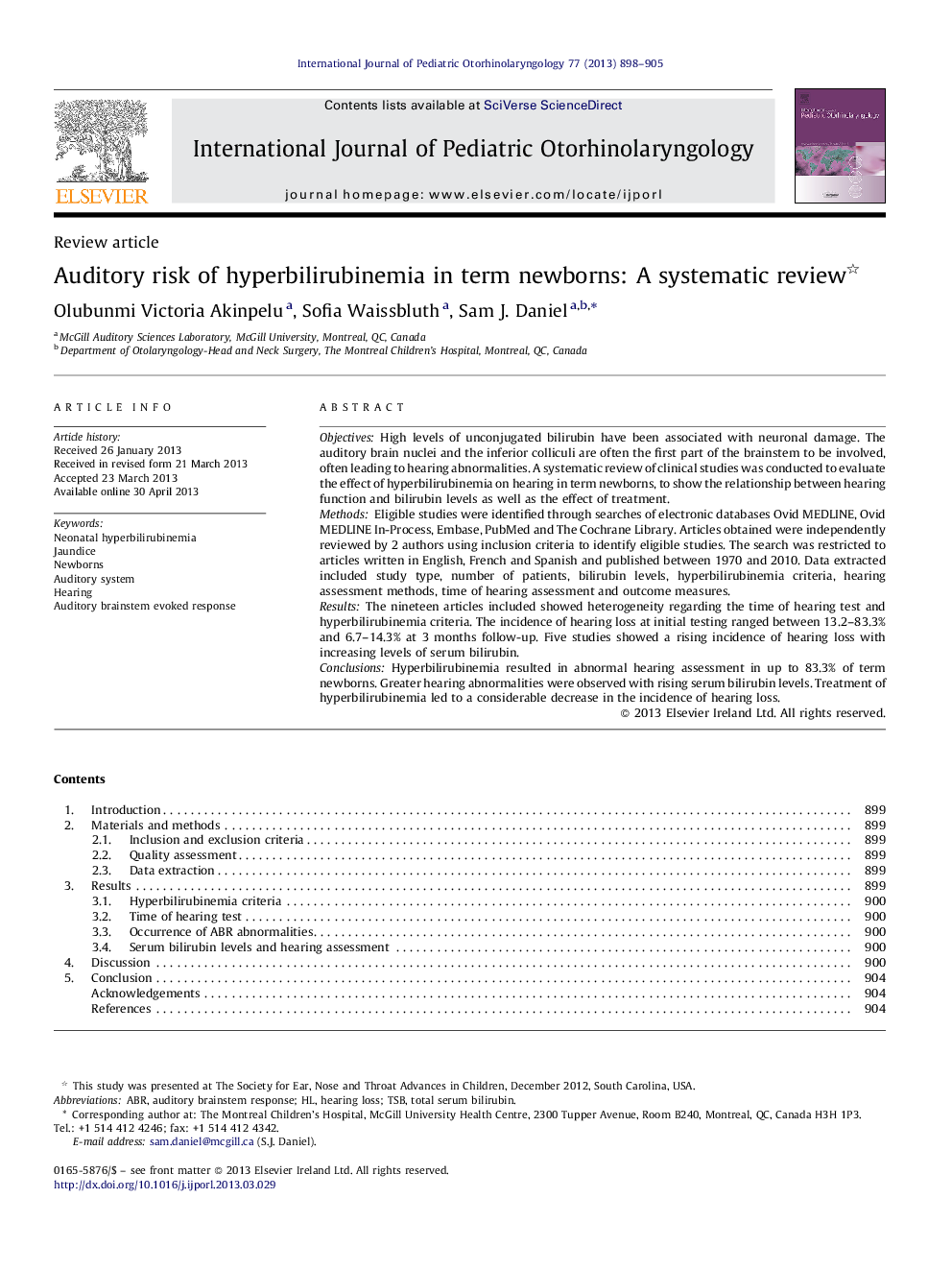| کد مقاله | کد نشریه | سال انتشار | مقاله انگلیسی | نسخه تمام متن |
|---|---|---|---|---|
| 6213678 | 1606019 | 2013 | 8 صفحه PDF | دانلود رایگان |

ObjectivesHigh levels of unconjugated bilirubin have been associated with neuronal damage. The auditory brain nuclei and the inferior colliculi are often the first part of the brainstem to be involved, often leading to hearing abnormalities. A systematic review of clinical studies was conducted to evaluate the effect of hyperbilirubinemia on hearing in term newborns, to show the relationship between hearing function and bilirubin levels as well as the effect of treatment.MethodsEligible studies were identified through searches of electronic databases Ovid MEDLINE, Ovid MEDLINE In-Process, Embase, PubMed and The Cochrane Library. Articles obtained were independently reviewed by 2 authors using inclusion criteria to identify eligible studies. The search was restricted to articles written in English, French and Spanish and published between 1970 and 2010. Data extracted included study type, number of patients, bilirubin levels, hyperbilirubinemia criteria, hearing assessment methods, time of hearing assessment and outcome measures.ResultsThe nineteen articles included showed heterogeneity regarding the time of hearing test and hyperbilirubinemia criteria. The incidence of hearing loss at initial testing ranged between 13.2-83.3% and 6.7-14.3% at 3 months follow-up. Five studies showed a rising incidence of hearing loss with increasing levels of serum bilirubin.ConclusionsHyperbilirubinemia resulted in abnormal hearing assessment in up to 83.3% of term newborns. Greater hearing abnormalities were observed with rising serum bilirubin levels. Treatment of hyperbilirubinemia led to a considerable decrease in the incidence of hearing loss.
Journal: International Journal of Pediatric Otorhinolaryngology - Volume 77, Issue 6, June 2013, Pages 898-905